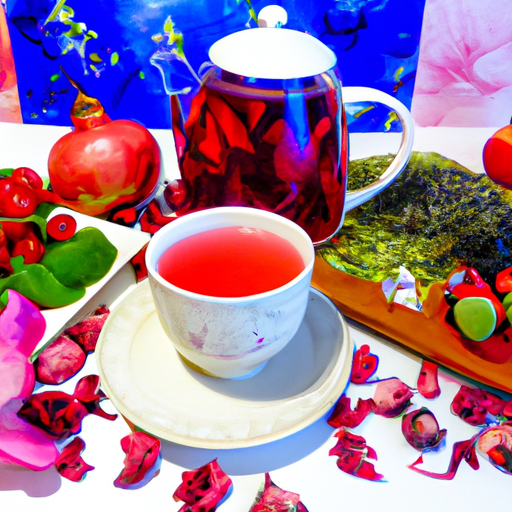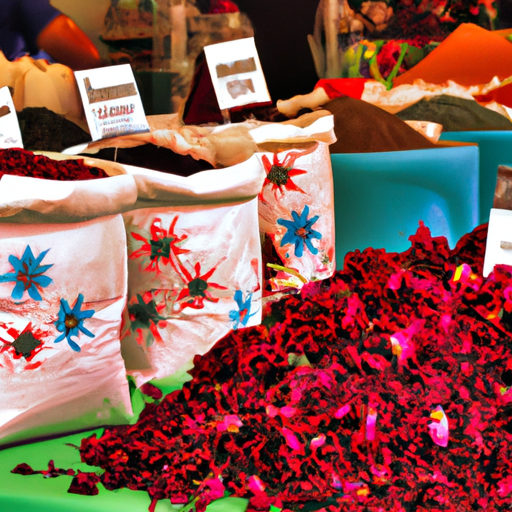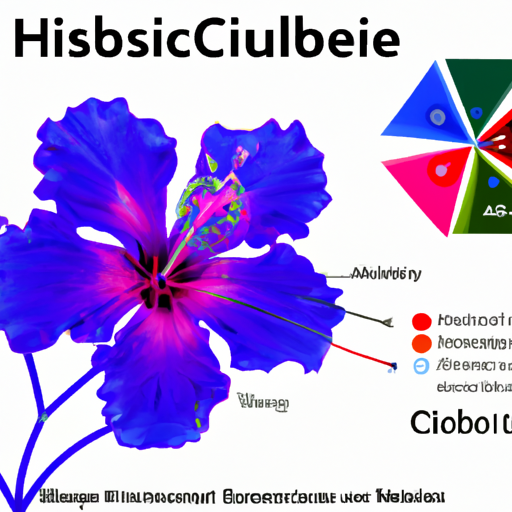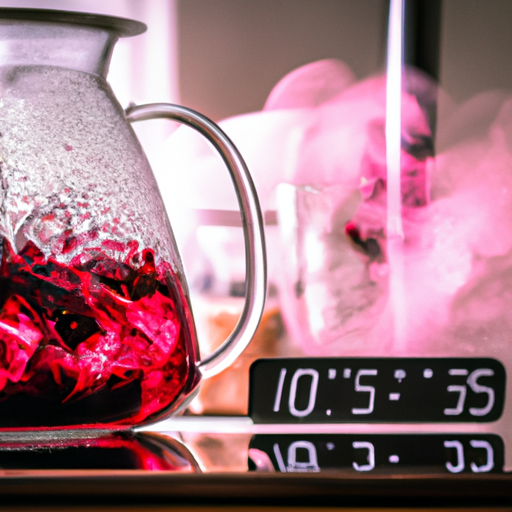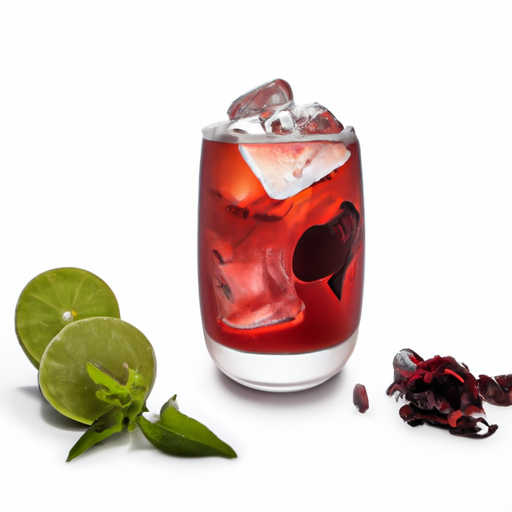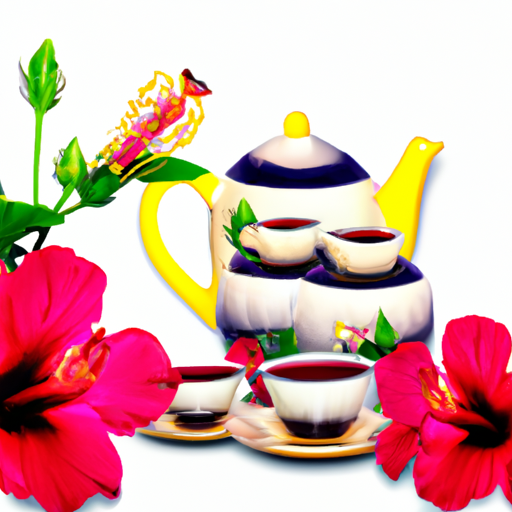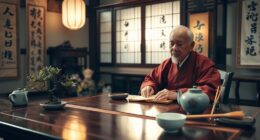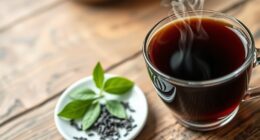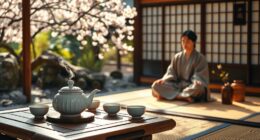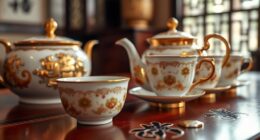I’m totally enamored with hibiscus tea, both for its vibrant hue and invigorating flavor, as well as its myriad health advantages. Packed with antioxidants, vitamin C, plus essential minerals such as potassium and magnesium, hibiscus tea is also celebrated for its ability to decrease blood pressure, minimize inflammation, and cut down cholesterol levels.
But sometimes I find myself wondering what would pair well with this floral beverage apart from the usual cookies or cakes.
After some research and personal experimentation, I’ve discovered that hibiscus tea pairs perfectly with certain fruits, spices, nuts, cheese, salty snacks as well as savory dishes.
In this article, I’ll explore each of these options in detail so that you can fully enjoy your cup of hibiscus tea with a tasty accompaniment. Whether you’re hosting a party or just want to indulge in an afternoon snack alone, these ideas will elevate your hibiscus tea experience to the next level!
Key Takeaways
- Hibiscus tea is rich in antioxidants, vitamin C, potassium, and magnesium, and offers various health benefits.
- Different varieties of hibiscus tea are available, each with a unique flavor profile. Cold brewing yields a smoother, less acidic taste, while hot brewing gives a bolder, richer flavor.
- Hibiscus tea can be paired with fruits, baked goods, cheese, spices, chocolate, nuts, salty snacks, and even savory dishes like roasted chicken and grilled vegetables.
- Non-alcoholic beverage pairing suggestions for hibiscus tea include lemonade, iced tea, and sparkling water. When pairing with food, consider the flavor and texture of the dish, and experiment with different mixing ratios and natural sweeteners like honey or agave nectar. It’s also important to stay hydrated when consuming hibiscus tea and sparkling water.
Understanding the Flavor Profile of Hibiscus Tea
You’ll love the tangy and slightly tart flavor of hibiscus tea, with its vibrant red color reminiscent of a blooming flower. This herbal tea has been enjoyed for centuries in many cultures around the world, and is known for its numerous health benefits.
Exploring hibiscus tea means delving into its rich history and discovering how it can improve your overall health. Different varieties of hibiscus tea are available, each with their own unique flavor profile. Some teas may have a more floral taste while others may be more tart or citrusy. Brewing techniques also play a significant role in the taste of this tea, as it can be brewed hot or cold to bring out different flavors. Cold brewing allows for a smoother, less acidic taste while hot brewing gives a bolder, richer flavor.
Moving on to fruits that pair well with hibiscus tea…
Fruits
When it comes to pairing hibiscus tea with fruits, there are a few key players that always come to mind.
As someone who’s tried various combinations, I can attest that berries such as raspberries and strawberries complement the tartness of hibiscus quite nicely.
Citrus fruits like oranges and lemons also work well with hibiscus by adding a refreshing zing to the mix.
And let’s not forget about pineapple – its sweet and juicy flavor balances out the tanginess of hibiscus, making for a tropical treat.
Berries
Adding a handful of mixed berries to your hibiscus tea will create a burst of vibrant colors and flavors that complement each other perfectly. Pairing hibiscus tea with fresh berries allows you to explore the contrast and complementarity of sweet and tart flavors.
Here are some berries that go well with hibiscus tea:
- Strawberries: These juicy red fruits add a sweet, slightly tangy flavor to your tea, making it taste like summertime in a cup.
- Blueberries: These small but mighty fruits offer a subtle sweetness that pairs nicely with the tartness of hibiscus, creating a balance of flavors.
- Raspberries: The bright red color and fruity flavor of raspberries make them an excellent addition to hibiscus tea. They add just the right amount of sweetness without overpowering the delicate flavor of the tea.
- Blackberries: With their bold flavor and deep purple color, blackberries bring richness to your hibiscus drink. Their slightly tart taste also helps cut through any bitterness from the tea.
If you’re looking for more ways to enhance your hibiscus experience, try adding these citrus fruits into the mix.
Citrus Fruits
Zest up your cup with a burst of tangy flavor by squeezing in the juice of a fresh lemon or lime. When exploring unique pairings for hibiscus tea, citrus fruits like lemons and limes are perfect accompaniments that can enhance its taste and offer numerous health benefits.
The sharp acidity of citrus fruits complements the floral notes of hibiscus tea, creating a refreshing blend that leaves you feeling invigorated. Moreover, combining citrus fruits with hibiscus tea can improve your overall health as they’re loaded with vitamin C, flavonoids, and antioxidants.
Vitamin C boosts your immune system while flavonoids help reduce inflammation in the body. Antioxidants present in both hibiscus tea and citrus fruits help protect cells from damage caused by free radicals. So, add some lemon or lime juice to your next cup of hibiscus tea not just for its flavorful taste but also for its health benefits.
To continue our exploration of what goes well with hibiscus tea, let’s talk about another tropical fruit – pineapple!
Pineapple
You can easily incorporate pineapple into your diet to reap its health benefits, such as its high vitamin C content – a single cup contains over 100% of the recommended daily intake. Here are four simple and delicious ways to enjoy pineapple with hibiscus tea:
-
Pineapple Hibiscus Tea: Brew hibiscus tea and add fresh or canned pineapple chunks for a tropical twist.
-
Pineapple Salsa: Combine diced pineapple, red onion, jalapeño, cilantro, lime juice, and salt for a refreshing salsa that pairs well with hibiscus tea.
-
Grilled Pineapple Skewers: Thread fresh pineapple chunks onto skewers and grill until caramelized. Serve alongside a cold glass of hibiscus tea for a sweet and tangy snack.
-
Pineapple Smoothie: Blend frozen pineapple chunks with almond milk, honey, and vanilla extract for a creamy smoothie that complements the tartness of hibiscus tea.
Aside from adding flavor to your drink or snack, incorporating pineapple into your diet also has numerous health benefits. It contains bromelain – an enzyme that aids in digestion and reduces inflammation in the body. Moreover, it’s rich in antioxidants that help fight against free radicals, which cause cell damage leading to chronic diseases like cancer or heart disease. If you’re looking for more ways to use pineapples in your recipes beyond just beverages or snacks, then stay tuned for our next section about baked goods!
Baked Goods
Savoring a warm slice of banana bread with a steaming cup of hibiscus tea is the perfect way to start your morning. When exploring flavor combinations, baked goods can be paired with hibiscus tea to create an exciting and tasty experience.
The sweet and nutty flavors of banana bread complement the tartness of hibiscus tea, creating a harmonious balance that’s both satisfying and invigorating. Texture pairings also play a significant role in creating enjoyable taste experiences when pairing baked goods with hibiscus tea.
A flaky croissant or buttery scone pairs well with the smooth texture of hibiscus tea, providing a contrast that complements each other’s flavors. The delicate texture of pastries such as macarons or Madeleines also works well with the lightness and delicacy of hibiscus tea.
When it comes to cheese, there are many options that pair well with hibiscus tea. From mild cheddar to sharp blue cheese, pairing cheese with hibiscus tea can elevate both their flavors and aromas. Whether you choose to enjoy your cheese on its own or spread on crackers, combining it with a cup of steaming hot hibiscus tea will take your taste buds on an adventure they won’t forget.
Cheese
I’m a big fan of baked goods, but sometimes I want to mix things up when enjoying my hibiscus tea. That’s where cheese comes in – it offers a different set of pairing possibilities and texture combinations that can really elevate the drinking experience.
When it comes to selecting cheeses to pair with hibiscus tea, there are a few key considerations to keep in mind. First and foremost, you want to choose something that won’t overpower the delicate flavors of the tea itself. Softer cheeses like brie or goat cheese are great options here, as they have a milder flavor profile that complements rather than competes with the tea’s unique taste.
In terms of texture combinations, there are plenty of ways to play around with this pairing. One classic option is simply spreading some soft cheese on your favorite cracker or piece of bread and sipping on your hibiscus tea alongside it. Alternatively, you could try melting some cheese over a vegetable or meat dish and serving it alongside the tea for an interesting contrast between hot and cold beverages. The possibilities are truly endless!
Speaking of endless possibilities, let’s move onto our next topic: spices…
Spices
When it comes to pairing spices with your cup of hibiscus tea, there are endless possibilities to add a burst of flavor and warmth. Spice pairing is an art that requires careful consideration of the taste profile of both the tea and the spice. You want to enhance the natural flavors without overpowering them. Here are some suggestions for spices that go well with hibiscus tea:
| Spice | Description | Cooking Techniques |
|---|---|---|
| Cinnamon | Warm and sweet with a hint of bitterness. Perfect for adding depth to hibiscus tea. | Sprinkle on top or stir in ground cinnamon while brewing. |
| Ginger | Pungent and spicy with a slight sweetness. Ginger adds heat and zing to hibiscus tea. | Slice fresh ginger root and steep in hot water along with hibiscus flowers or use powdered ginger when brewing. |
| Cloves | Strong, sweet, and slightly bitter with hints of nutmeg and cinnamon. | Add whole cloves while brewing or sprinkle ground cloves on top after brewing for added aroma and flavor. |
By experimenting with different spices, you can create unique blends that cater to your personal preferences. When cooking with these spices, consider using techniques such as simmering or infusing to extract maximum flavor.
As we move onto the next section about chocolate, keep in mind that just like spice pairing, chocolate also has its own set of complexities when it comes to finding the perfect match for hibiscus tea.
Chocolate
I absolutely love chocolate, and I’m excited to talk about how it pairs with hibiscus tea.
When it comes to chocolate, there are three main types: dark, milk, and white. Each has its own unique flavor profile that can complement or contrast with the tartness of hibiscus tea in different ways.
Let’s dive into each type and explore their potential pairings with this delicious herbal infusion.
Dark Chocolate
Indulge in the rich, smooth taste of dark chocolate while sipping on a refreshing cup of hibiscus tea. Dark chocolate isn’t just delicious but also has numerous health benefits. It contains high levels of antioxidants and flavanols, which can help reduce inflammation and lower blood pressure.
When it comes to pairing dark chocolate with hibiscus tea, there are a few brands that stand out. Some of the best brands of dark chocolate to pair with hibiscus tea include Lindt 85% Cocoa Excellence Bar, Green & Black’s Organic 85% Dark Chocolate Bar, and Theo Chocolate Organic Dark Chocolate 85%. These chocolates have a high percentage of cocoa solids which pairs well with the tartness of hibiscus tea.
As we move onto the next subtopic about milk chocolate, it’s important to note that while milk chocolate may be sweeter than dark chocolate, it doesn’t contain as many health benefits as its darker counterpart.
Milk Chocolate
After exploring the decadent pairing of dark chocolate and hibiscus tea, I decided to switch things up and try out a sweeter option: milk chocolate.
The richness of milk chocolate complements the tartness of hibiscus tea in a delightful way. When sipping on my cup of hibiscus tea, I found that taking a small bite of milk chocolate in between sips created a harmonious balance between sweet and tangy flavors.
But it’s not just about taste – texture also plays an important role when combining milk chocolate with hibiscus tea. As the smooth, velvety texture of milk chocolate melts in your mouth, it creates a creamy contrast to the light and refreshing consistency of hibiscus tea. This combination is perfect for those who enjoy indulging their sweet tooth while still maintaining some level of freshness.
As much as I loved exploring the sweetness that comes with pairing milk chocolate with hibiscus tea, there’s still another type of chocolate worth trying – white chocolate.
White Chocolate
Contrary to popular belief, white chocolate doesn’t contain any cocoa solids and is made from cocoa butter, sugar, and milk. This means it has a milder flavor than its darker counterpart and can pair with a wider variety of flavors without overwhelming them.
When considering pairing possibilities for hibiscus tea, I decided to conduct a taste test comparison between white chocolate and milk chocolate. In my experiment, I found that the sweetness of the white chocolate complemented the tartness of the hibiscus tea in a way that milk chocolate did not. The creaminess of the white chocolate also helped to balance out any bitterness in the tea, making for a smoother overall experience.
While both chocolates were enjoyable with hibiscus tea, I found myself reaching for another piece of white chocolate more often than not.
Now onto nuts…
Nuts
You’ll love how a handful of mixed nuts perfectly complements the fruity and floral notes in your hibiscus tea. Not only do they add a satisfying crunch to your sip, but also a variety of health benefits.
Nuts are packed with essential vitamins, minerals, and healthy fats that can help lower cholesterol levels and reduce the risk of heart disease.
When it comes to preparing your nuts for pairing with hibiscus tea, there are a few tips to keep in mind. Firstly, avoid any heavily salted or flavored options as they may overpower the delicate flavors of the tea. Instead, opt for plain roasted or raw nuts that will allow you to fully appreciate the taste profile of both items.
As you reach for another handful of nuts while enjoying your hibiscus tea, consider trying out some salty snacks on your next brew break. From chips to pretzels, there are plenty of options that can provide an interesting contrast to the sweet and tangy notes in your cuppa.
Salty Snacks
I absolutely love pairing my hibiscus tea with some salty snacks to balance out the sweetness.
Popcorn, pretzels, and tortilla chips are some of my favorite options. Popcorn offers a light and airy crunch, pretzels have a satisfying chewiness, and tortilla chips provide a hearty bite that complements the bold flavors of hibiscus tea.
Adjusting the paragraph structure not only makes it easier to read, but it also highlights the distinct thoughts and ideas.
Popcorn
Popcorn is the perfect snack to munch on while sipping a hot cup of hibiscus tea, it’s like music to your taste buds. When it comes to pairing popcorn with hibiscus tea, there are countless options that you can explore. Whether you prefer sweet or savory snacks, popcorn offers endless possibilities for flavor combinations.
One way to experiment with different popcorn seasonings and toppings is by creating a table that lists various options in two columns: sweet and savory. In the first row of the table, you could list classic buttered popcorn as a savory option, while kettle corn could be listed as a sweet alternative in the second row. Other toppings and seasonings such as garlic parmesan or caramel can also be added as potential pairings for both sweet and savory preferences. With so many possibilities, it’s easy to find the perfect popcorn pairing for your hibiscus tea cravings.
If you’re not feeling like popcorn, fear not because there are other salty snacks that pair well with hibiscus tea too. Let’s dive into how pretzels make for an excellent choice when drinking this deliciously floral beverage.
Pretzels
Indulging in a salty snack like pretzels while enjoying your cup of hibiscus tea can elevate the flavors in your mouth. The combination of sweet and tart from the tea with the crunch and saltiness of the pretzels creates a perfect balance that makes each bite and sip more enjoyable.
Here are some pairing suggestions to try:
-
Soft pretzels: The soft texture of these pretzels contrasts well with the crispness of hibiscus tea, creating an interesting textural experience.
-
Pretzel chips: These thin, crunchy snacks provide a satisfying crunch that complements the smoothness of hibiscus tea.
-
Mustard dip: Add some tangy mustard dip to your pretzels for an extra kick that pairs perfectly with hibiscus tea’s fruity notes.
-
Honey drizzle: If you prefer a sweeter snack, drizzle some honey over your pretzels to create a delicious flavor contrast when paired with hibiscus tea.
Moving on to tortilla chips, another great option for pairing with hibiscus tea.
Tortilla Chips
Elevate your snack game and tantalize your taste buds with the perfect pairing of tortilla chips and hibiscus tea.
When it comes to finding the ideal dip for your tortilla chips, there are plenty of options to explore. From classic salsa to guacamole, or even a tangy queso dip, the possibilities are endless. However, when paired with a refreshing cup of hibiscus tea, these dips can take on a whole new level of flavor.
To create the perfect hibiscus tea and tortilla chip pairing, start by brewing your tea using fresh ingredients such as dried hibiscus flowers or teabags. Add some honey or agave syrup for sweetness and let it cool in the fridge while you prepare your dipping sauces.
Once you have chosen your favorite dip(s), serve them alongside a chilled glass of hibiscus tea and enjoy as the flavors meld together to create a deliciously satisfying snack.
As much as I love snacking on tortilla chips and sipping on hibiscus tea, there’s nothing quite like enjoying these food items as part of a larger savory dish. Stay tuned for my next topic where I’ll be discussing some mouth-watering dishes that incorporate these two ingredients into one unforgettable meal.
Savory Dishes
You’ll love pairing hibiscus tea with a savory dish like roasted chicken or grilled vegetables. The strong umami flavors in these dishes complement the tart and floral notes of hibiscus tea perfectly.
For example, roasted chicken seasoned with herbs like thyme or rosemary brings out the earthy undertones of hibiscus, while grilled vegetables like eggplant or zucchini add a smoky depth to the tea’s flavor.
When considering pairings for hibiscus tea, it’s important to think about both flavor and texture. A dish that’s too heavy or rich may overpower the delicate taste of the tea, while something too light may be overshadowed by its boldness. That’s why savory dishes are such a great choice – they offer just the right balance of substance and complexity to stand up to hibiscus’ unique profile.
In addition to roasted chicken and grilled veggies, other savory options that go well with hibiscus tea include quinoa salads with avocado and feta cheese, spicy lentil soup, or even mushroom risotto. These dishes not only provide satisfying flavor combinations but also offer an array of health benefits that complement those found in hibiscus tea.
With so many delicious options available, you’re sure to find your perfect match! Speaking of matches… let’s move on to non-alcoholic beverages next!
Non-Alcoholic Beverages
When it comes to non-alcoholic beverages, there are a few options that pair perfectly with hibiscus tea. First up is lemonade, which adds a sweet and tangy twist to the floral notes of the tea.
Another great option is iced tea, which can be made with black tea or green tea for a refreshing and cooling drink.
And finally, sparkling water is a great choice for those who want something bubbly and light to sip on while enjoying their hibiscus tea.
Lemonade
Pairing hibiscus tea with lemonade is like a sweet and sour dance on your taste buds. The floral notes of the hibiscus blend perfectly with the tartness of the lemonade, creating a refreshing and flavorful drink that’s perfect for any occasion.
To make the perfect hibiscus lemonade, start by brewing a strong batch of hibiscus tea using boiling water and dried hibiscus flowers. Once brewed, mix in fresh-squeezed lemon juice to taste and add a touch of honey or agave syrup for sweetness. For unique variations, try adding in mint leaves or sliced strawberries to give your hibiscus lemonade an extra burst of flavor. Whatever you choose to add, make sure to experiment with different mixing ratios until you find the perfect balance of sweet and tart.
As much as I love sipping on a glass of refreshing hibiscus lemonade, sometimes I crave something a bit stronger. That’s when I turn to iced tea – another classic beverage that pairs perfectly with hibiscus tea.
Iced Tea
I can’t resist a tall, cold glass of hibiscus-infused iced tea on a hot summer day. There’s something about the sweet and tart flavor that perfectly complements the refreshing chill of the ice.
What’s great about hibiscus tea is that it lends itself well to variations in iced tea recipes. You can add fresh fruit like lemon or orange slices, mint leaves, or even ginger for an extra kick of flavor.
When it comes to sweetening your hibiscus iced tea, there are several options that work well with its distinct flavor profile. Honey and agave nectar are excellent natural sweeteners that won’t overpower the taste of the tea. If you prefer a more traditional approach, cane sugar or simple syrup will do just fine. Just be sure not to overdo it – hibiscus already has a natural sweetness that doesn’t need too much added sugar.
As much as I love hibiscus iced tea, sometimes I want to switch things up and add some fizziness to my drink. That’s where sparkling water comes in – it adds a light effervescence without detracting from the unique flavors of the hibiscus.
Sparkling Water
Adding sparkling water to your hibiscus-infused iced tea can be a game-changer. It brings a bubbly texture that will make you want to take another sip. Not only does it add an extra layer of flavor, but it also brings some much-needed hydration to your drink.
Mixing sparkling water with hibiscus tea is one of the best mixology ideas out there. It adds a unique twist to a classic beverage. When making this drink, it’s important to keep in mind some hydration tips.
Since sparkling water and hibiscus tea both have natural diuretic properties, drinking enough fluids is crucial for staying hydrated throughout the day. You can add more fruits or herbs like lemon or mint leaves to enhance the taste and make it even more refreshing.
Overall, adding sparkling water to hibiscus iced tea is an easy way to elevate your drink and impress your guests at any party or gathering.
Frequently Asked Questions
What are the health benefits of hibiscus tea?
As someone who enjoys drinking hibiscus tea, I can confidently say that it has numerous health benefits.
For starters, hibiscus tea is known to aid in weight loss by reducing the absorption of carbohydrates and fat.
It’s also a great source of antioxidants, which promote healthy skin by protecting against free radical damage and premature aging. In fact, hibiscus tea is often used as an ingredient in skincare products for its anti-inflammatory properties and ability to improve texture and tone.
So if you’re looking for a delicious way to support your overall health and wellness, incorporating hibiscus tea into your routine may be worth considering.
Is hibiscus tea safe for pregnant women and children?
As a healthcare professional, I recommend that pregnant women and children exercise caution when consuming hibiscus tea. While there isn’t enough evidence to suggest that it’s harmful, potential risks include decreased fertility, hormonal imbalances, and complications during pregnancy.
It’s essential to consult with a healthcare provider before incorporating hibiscus tea into your diet. The recommended dosage for adults is two to three cups per day.
Alternative herbal teas, such as chamomile and ginger, are safe options for pregnant women and children who want to enjoy the health benefits of tea without any potential risks.
Overall, it’s important to prioritize safety when considering what types of teas to consume during pregnancy or when offering drinks to children.
How do you properly brew hibiscus tea?
When brewing hibiscus tea, it’s important to first bring water to a boil and then let it cool for a few minutes before pouring over the tea leaves.
The ideal temperature for steeping hibiscus tea is around 195-205°F, which is just below boiling point.
Steeping time can vary depending on personal taste preferences, but typically ranges from 5-10 minutes.
It’s important not to over-steep hibiscus tea as this can result in a bitter taste.
To enhance the flavor of hibiscus tea, consider adding honey or lemon juice during preparation.
Overall, by following these guidelines, you can enjoy a perfectly brewed cup of hibiscus tea with its unique tart and floral flavors shining through.
Can hibiscus tea be used as a natural food coloring?
I’ve found that hibiscus tea can actually be a great natural food coloring option for baking. Its vibrant pink hue adds a fun and unique touch to desserts without the use of artificial dyes.
Additionally, hibiscus tea has been known to have benefits in skincare due to its high levels of antioxidants and anti-inflammatory properties. Incorporating it into DIY face masks or using it as an ingredient in skincare products can help improve overall skin health.
So while hibiscus tea may be commonly enjoyed as a beverage, its potential uses go beyond just sipping on a hot cup.
What are some common flavor pairings for hibiscus tea in cocktails?
When it comes to creating a hibiscus tea cocktail, there are plenty of options for mixers and flavor pairings. Some popular mixers for hibiscus tea include citrus juices like lime or orange, as well as sparkling water or soda.
To add some sweetness to your cocktail, consider using simple syrup or honey. When it comes to complementary flavors, ginger and mint are both great options that can enhance the floral notes of the hibiscus.
For a bit of spice, try adding some jalapeño slices or chili powder. There are countless Hibiscus tea cocktail recipes out there, so don’t be afraid to experiment with different ingredients until you find your perfect combo!
Conclusion
In conclusion, I’ve come to realize that hibiscus tea is a versatile beverage that can be enjoyed in many ways. The tart and floral notes of the tea blend well with fruits like strawberries, raspberries, and oranges.
Baked goods such as muffins, scones, and cakes also pair well with hibiscus tea. Cheese lovers will appreciate the way the tangy flavor of hibiscus tea complements creamy cheeses like goat cheese and brie.
For those who enjoy a little spice in their life, adding cinnamon or ginger to your cup of hibiscus tea will create a warming sensation that is sure to satisfy. As for me, I find that pairing hibiscus tea with salty snacks like popcorn or pretzels creates a perfect balance between sweet and savory.
As they say, variety is the spice of life. So why not try something new and experiment with different food pairings for your next cup of hibiscus tea? You might just discover a new favorite combination! After all, as Maya Angelou once said, "You can’t use up creativity. The more you use, the more you have."

